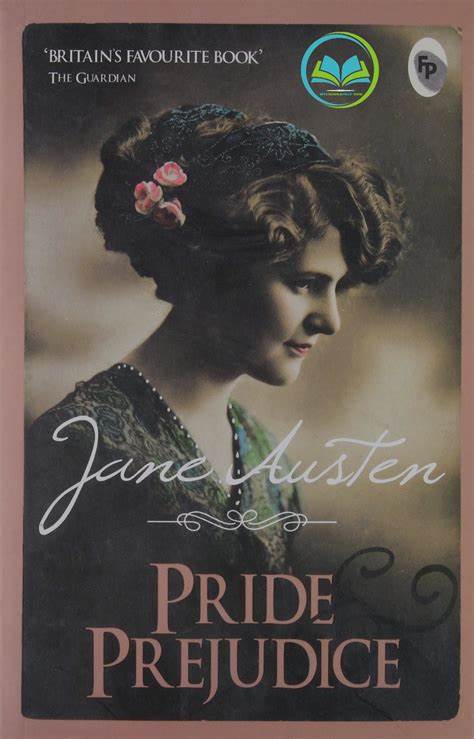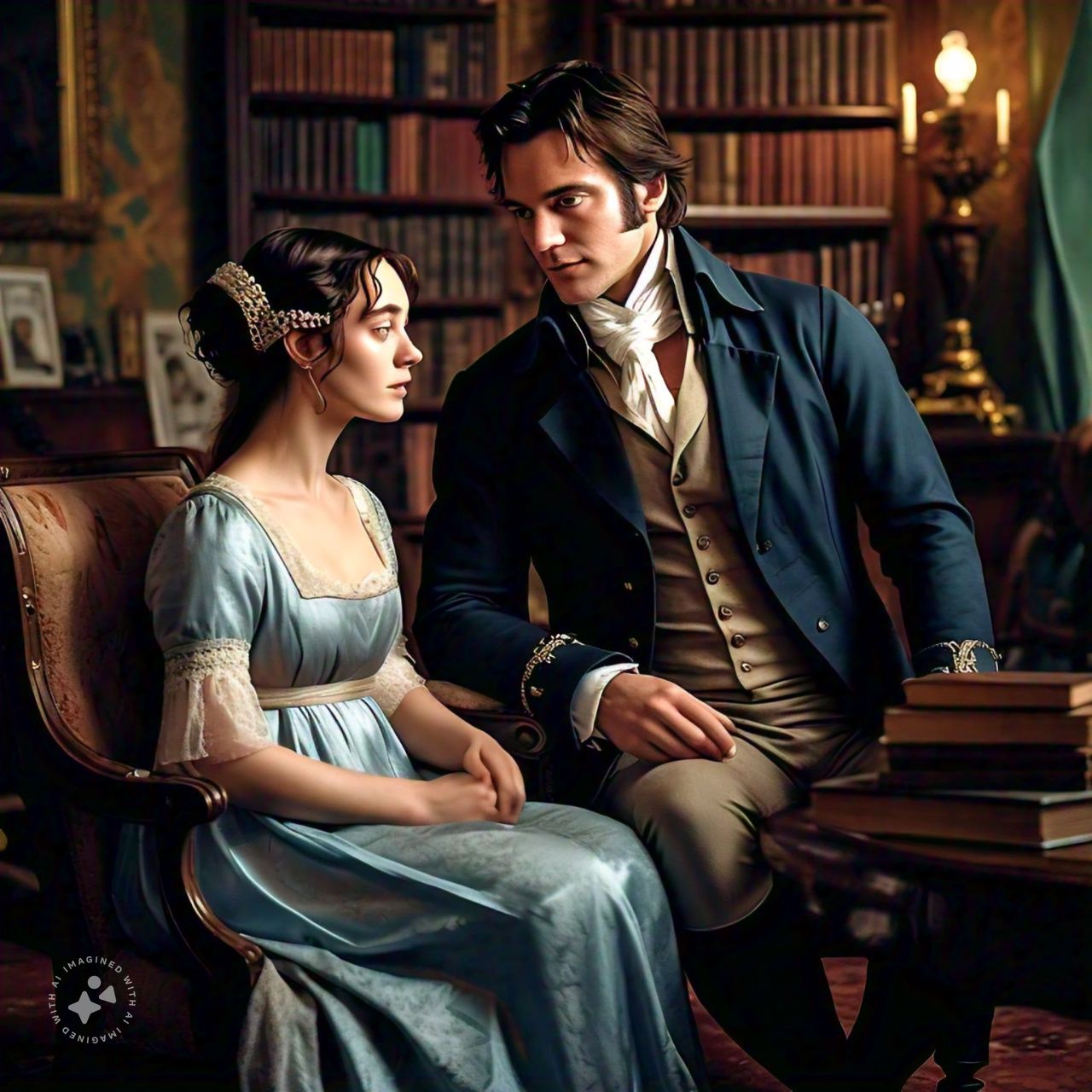“From Pride to Love: A Detailed Summary of Pride and Prejudice”

“Pride and Prejudice” by Jane Austen, published in 1813, is a romantic novel that explores themes of love, class, social expectations, and personal growth. Set in the rural English countryside during the Regency era, the story centers around the Bennet family, particularly Elizabeth Bennet, the second of five daughters.
Introduction and Setting the Scene
The novel opens with the famous line, “It is a truth universally acknowledged, that a single man in possession of a good fortune, must be in want of a wife.” This sets the tone for the societal pressures surrounding marriage, particularly for the Bennet family, whose estate is entailed to a male heir. Mr. and Mrs. Bennet, living in Longbourn, are focused on securing advantageous marriages for their daughters, as Mr. Bennet’s estate will be inherited by Mr. Collins, a distant cousin.
Arrival of Mr. Bingley and Mr. Darcy
The arrival of Mr. Charles Bingley, a wealthy and affable gentleman, to the nearby estate of Netherfield Park creates a stir in the local society. He is immediately attracted to Jane Bennet, the eldest Bennet daughter. Along with Mr. Bingley comes his friend, Mr. Fitzwilliam Darcy, who is wealthier but perceived as proud and aloof. At a local ball, while Bingley is sociable and kind, Darcy refuses to dance with Elizabeth, causing her to develop an initial dislike for him. The local society also views Darcy’s reserved manner as arrogant.
Elizabeth and Mr. Wickham
Elizabeth’s opinion of Darcy worsens after she meets Mr. George Wickham, a charming militia officer stationed nearby. Wickham tells Elizabeth a misleading story of how Darcy deprived him of a promised inheritance, painting Darcy as cruel and unjust. Elizabeth readily believes this account, further solidifying her prejudice against Darcy.
Mr. Collins’ Proposal
Mr. Collins, the Bennets’ pompous cousin and heir to the family estate, visits Longbourn with the intention of proposing to one of the Bennet daughters. After considering Jane, he shifts his attention to Elizabeth. His proposal, full of self-importance and lacking any genuine affection, is rejected by Elizabeth, much to her mother’s dismay. Mr. Collins soon marries Charlotte Lucas, Elizabeth’s sensible friend, who sees the match as a practical decision.
Bingley and Darcy Leave Netherfield
Just as Bingley’s courtship of Jane seems to be progressing, he abruptly leaves Netherfield, seemingly under the influence of Darcy and Bingley’s sisters, who believe Jane’s status is too low. Jane is heartbroken, and Elizabeth becomes even more resentful of Darcy for interfering in her sister’s happiness.
Darcy’s Proposal and Elizabeth’s Rejection
Elizabeth visits her newly married friend Charlotte and encounters Mr. Darcy at Rosings Park, the estate of his wealthy and domineering aunt, Lady Catherine de Bourgh. During this visit, Darcy unexpectedly proposes to Elizabeth, confessing his love for her despite her lower social standing. However, Darcy’s proposal is more a declaration of his inner struggle, as he highlights the social gap between them. Shocked, Elizabeth rejects him, accusing him of arrogance, ruining her sister’s chances with Bingley, and mistreating Mr. Wickham.
Darcy’s Letter
The day after the proposal, Darcy gives Elizabeth a letter explaining his actions. He reveals that Wickham’s story was a lie: Wickham had tried to elope with Darcy’s younger sister, Georgiana, for her fortune. Darcy also clarifies that his interference in Jane and Bingley’s relationship was based on his belief that Jane did not truly love Bingley, as she appeared reserved. Elizabeth, though initially angry, begins to reconsider her judgments of Darcy.
Elizabeth’s Realization and Darcy’s Transformation
Elizabeth returns home with a changed perspective on Darcy, realizing that she had been blinded by her initial prejudice. Meanwhile, Darcy undergoes personal growth, reflecting on Elizabeth’s accusations of pride and recognizing the need to address his flaws. Later, Elizabeth and her aunt and uncle visit Darcy’s estate, Pemberley, where Darcy’s changed demeanor—more kind and generous—impresses Elizabeth.
Lydia’s Elopement and Darcy’s Role
The narrative takes a dramatic turn when Lydia Bennet, the youngest and most reckless Bennet daughter, elopes with Wickham, causing a scandal that threatens the family’s reputation. Darcy secretly intervenes, paying off Wickham’s debts and arranging their marriage to save the Bennet family from disgrace, without seeking recognition for his actions. This act of kindness further changes Elizabeth’s view of him.
Bingley and Jane Reunite
With Darcy’s encouragement, Bingley returns to Netherfield and resumes his courtship of Jane, leading to their eventual engagement. Elizabeth, now fully aware of Darcy’s integrity and love for her, realizes her own feelings for him have changed.
Lady Catherine’s Interference
Lady Catherine de Bourgh, Darcy’s aunt, learns of Darcy’s feelings for Elizabeth and confronts her, demanding she promise not to marry Darcy. Elizabeth refuses to comply, asserting her independence and strengthening Darcy’s admiration for her.
Elizabeth and Darcy’s Marriage
Darcy, encouraged by Elizabeth’s refusal to submit to his aunt, proposes again, this time humbly and with genuine love. Elizabeth accepts, and the two are married. Their union symbolizes the overcoming of pride and prejudice, both in themselves and in society. The novel concludes with the marriages of Jane and Bingley, and Elizabeth and Darcy, celebrating love built on mutual respect and understanding.
Conclusion
“Pride and Prejudice” is a masterful exploration of the social dynamics and personal growth that shape relationships. Through Elizabeth and Darcy, Austen critiques the rigid class structures and gender expectations of her time, while offering a timeless story about love, self-awareness, and the danger of letting initial impressions cloud judgment.
“Pride and Prejudice” explores several important themes that shape the characters and the story. Here are the key themes of the novel:
Pride and Prejudice
The title itself reflects two central themes: pride and prejudice. Darcy’s pride in his social status and Elizabeth’s prejudice based on first impressions lead to misunderstandings between them. Both characters must overcome these flaws to develop a deeper understanding of themselves and each other.Love and Marriage
The novel examines different kinds of relationships and marriages, from those based on love (Elizabeth and Darcy, Jane and Bingley) to those formed for convenience (Charlotte and Mr. Collins). It critiques the societal pressures to marry for financial security rather than affection, while celebrating the ideal of a marriage based on mutual respect and love.Social Class and Status
Social class plays a critical role in the interactions and judgments between characters. The rigid class structures of Regency-era England affect how individuals view one another and their potential for marriage. Darcy’s initial disdain for Elizabeth’s lower social status and her family’s behavior reflects the influence of class on relationships.Reputation and Decorum
Reputation, particularly for women, is a significant theme. Characters like Elizabeth and Jane must navigate societal expectations of proper behavior, while Lydia’s reckless elopement threatens the entire Bennet family’s reputation. The importance placed on decorum highlights the restrictive social norms of the time.Self-Reflection and Growth
Both Elizabeth and Darcy undergo significant personal growth throughout the novel. Elizabeth learns to look beyond her initial judgments, while Darcy overcomes his arrogance and pride. Their individual journeys toward greater self-awareness and understanding are key to their romantic development.Gender Roles and Expectations
The novel subtly critiques the limited roles available to women in society, as their futures often hinge on making a good marriage. Characters like Mrs. Bennet focus solely on securing husbands for their daughters, while Elizabeth resists these pressures, showing independence in her thinking and choices.Money and Marriage
The connection between wealth and marriage is a recurring theme. Marriages are often driven by financial considerations, as seen in Charlotte’s pragmatic decision to marry Mr. Collins. Austen critiques the economic motivations behind marriage, contrasting them with the idea of love-based unions.
These themes interweave to offer a critique of societal norms and human behavior, making Pride and Prejudice a rich exploration of 19th-century English life.


1 thought on ““From Pride to Love: A Detailed Summary of Pride and Prejudice””